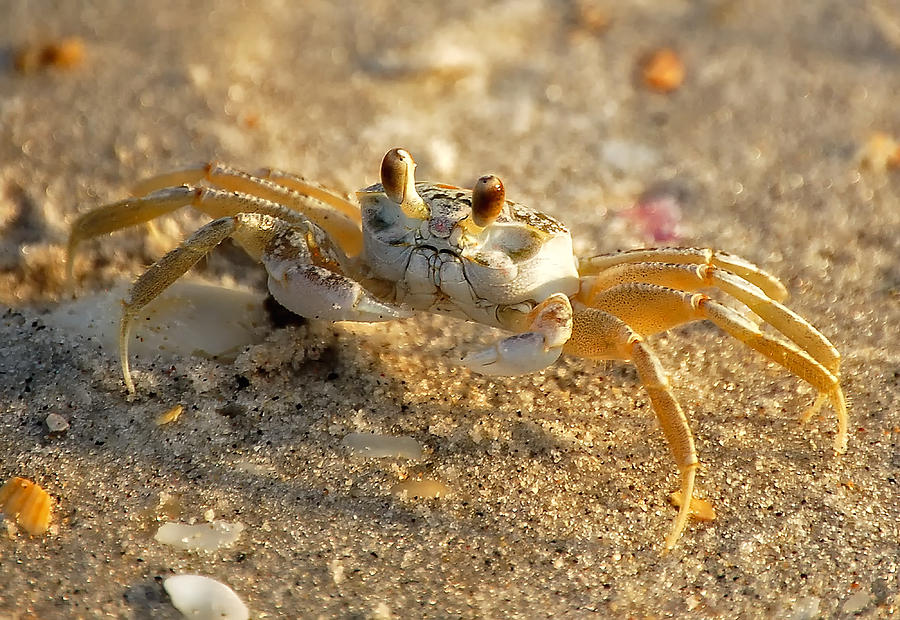

When they are foraging at night, they can frequently be found along the waterline, even in the water. Ghost crabs are true marine organisms and can survive underwater. Some researchers propose that they use this sound to warn other crabs from entering their burrow others suggest that male crabs might use the sound to attract females. When the crab rubs this structure against a ridge located at the base of that leg, they create a “creaky” sound. A special structure on the inside of the crabs right claw looks a little like a wash-board, it’s called a stridulating organ. Ghost crabs communicate with one another using more than just visual signals, they can make sounds. Males can also be identified by the “horn” at the end of their stalked eyes. Just looking down the beach, you can see where the males’ burrow are – this may be very important to the crabs at mating time, when females need to identify the location of potential mates.

But, females and young individuals just scatter the sand in all directions outside their burrows. Reproductively mature male ghost crabs arrange the sand they’ve excavated from their burrow into a neat pyramid-shaped pile next to the entrance (and you can often see their “foot-prints” between the burrow entrance the pile). The size of the burrow opening indicates the size of the crab that lives in it. Ghost crabs live alone in their sandy shelters, and you can tell a lot about each resident by the way their burrow is built. Ghost crabs are well named, for they seem to “disappear” – their pale colors match the sand on which they live, and they dart quickly down into burrows at any sign of disturbance. Young crabs, an inch or less across are seen on the sand surface both night and day, perhaps because they are not yet large enough or strong enough to dig their own burrows. Adult crabs become active at dusk, digging and repairing their burrows.

Most active at night, ghost crabs spend the day in spiral burrows where the insulating sand keeps them moist and cool. These active crabs inhabit sandy beaches just above the waterline.


 0 kommentar(er)
0 kommentar(er)
